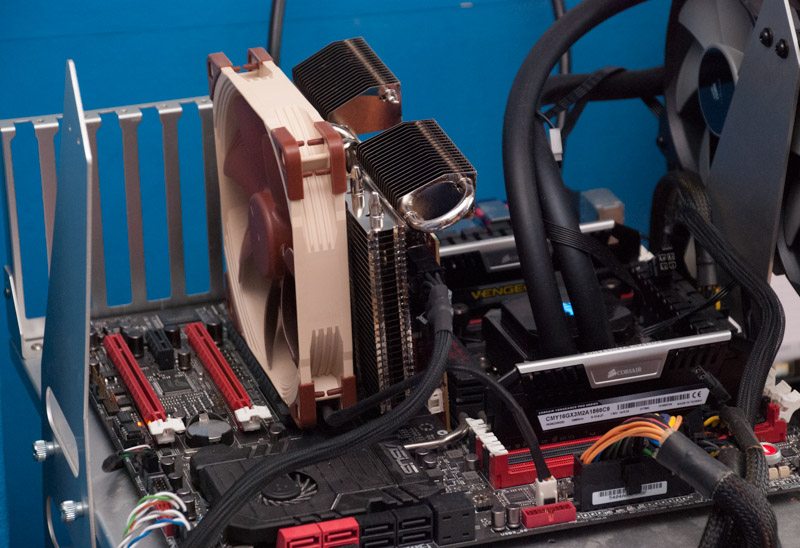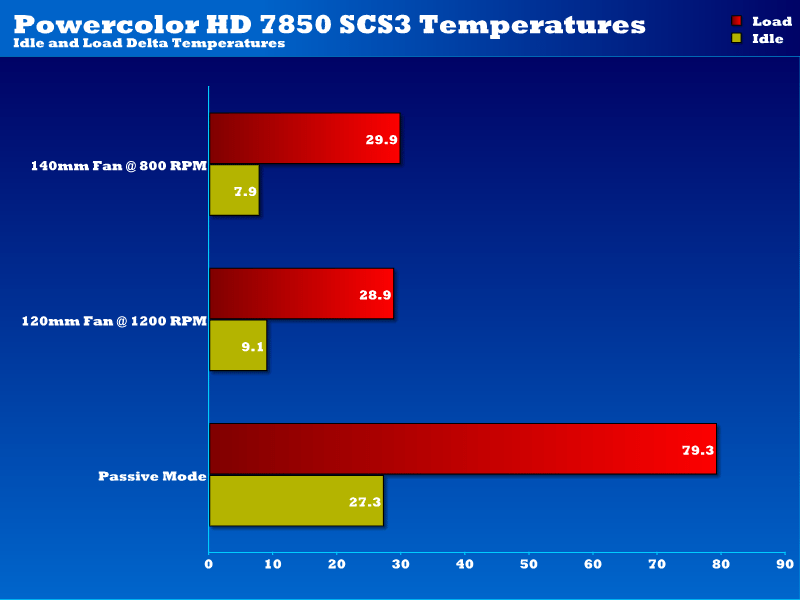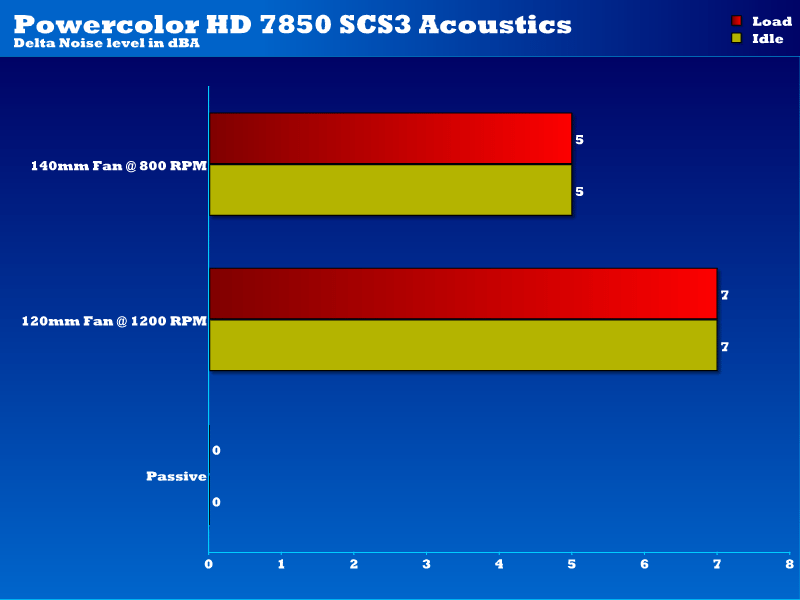PowerColor HD 7850 SCS3 Review
Ryan Martin / 11 years ago

To test the cooling capabilities of the Powercolor HD 7850 SCS3 graphics card we measured temperatures at desktop idle and gaming load. We allowed for 10 minutes of idle and load time before taking the minimum and maximum temperatures respectively. Gaming load was simulated by running Unigine Heaven 4.0. Both fans had a fixed RPM thus they also had a fixed noise output. Noise measurements were taken about 10cm away from the graphics card to be able to fully notice the difference between the two fans in terms of noise output.

Our test bench set-up, not being inside a ventilated case, saw temperatures soar to around 100 degrees Celsius which is certainly dangerously high considering we were running Unigine 4.0 not something unrealistic like Furmark. That said inside a normal chassis with one or more fans you’d easily see much better temperatures due to the normal airflow inside the case carrying heat away and the fact we are currently experiencing something of a heat-wave here in the UK doesn’t help either.
However, with an additional fan you can see there is dramatically improved cooling performance to the tune of 50 degrees Celsius. Both the Noctua NF-A14 ULN at 800 RPM and the Prolimatech Blue LED Vortex 12 at 1200 RPM performed roughly the same. The 120mm fan performed slightly better and is probably the better option given the fact the Powercolor SCS HD 7850 isn’t that tall so a 140mm blows a lot of air over the top of the card without doing anything. Naturally performance will vary by the type of fan, who makes it and its size but this gives you a rough idea of what to expect.

In terms of acoustics we saw that both options added very minimal amounts of noise. We recorded a noise level of 38 dBA as the “background noise” level. Of course the passive card added nothing to this so it stayed at 38 dBA while the 140mm fan increased that to 43 dBA and the 120mm fan to 45 dBA. Of course even then the noise level was still incredibly low and we had to bring the decibel meter in very close to distinguish a numerical difference between the two fans. Inside a case these configurations would be inaudible, though the 140mm Noctua fan would be significantly more inaudible and while 120mm fans may give slightly better temperatures because there airflow is more focused due to size compatibility, the 140mm fans will allow you to use lower RPMs and thus create less noise.



















